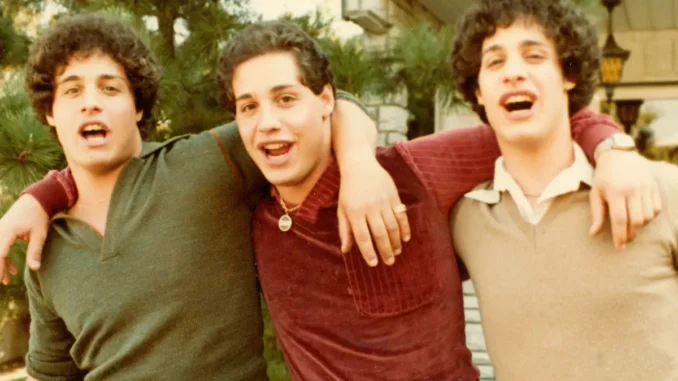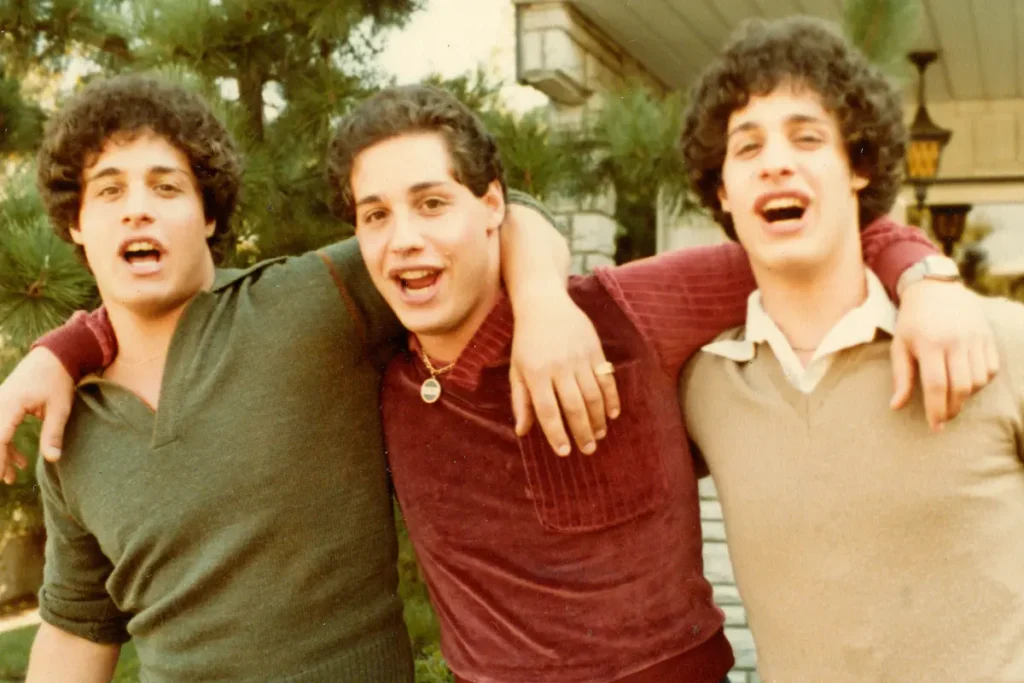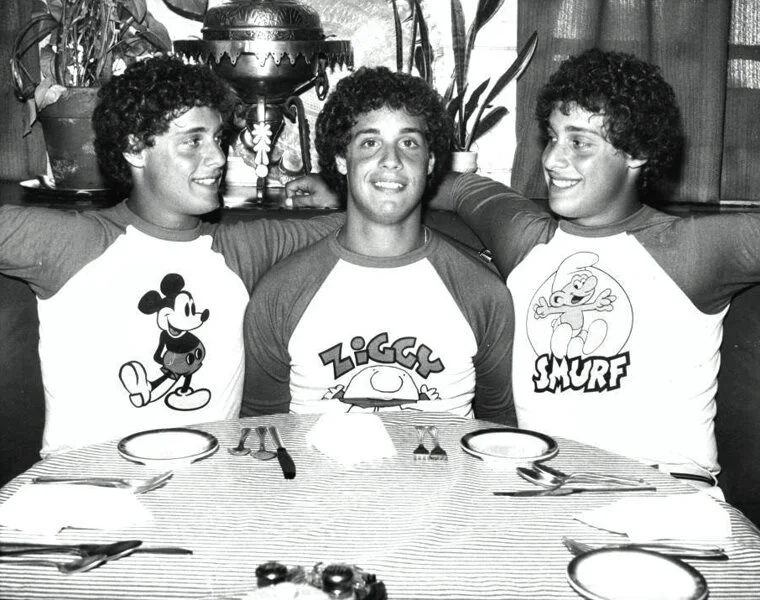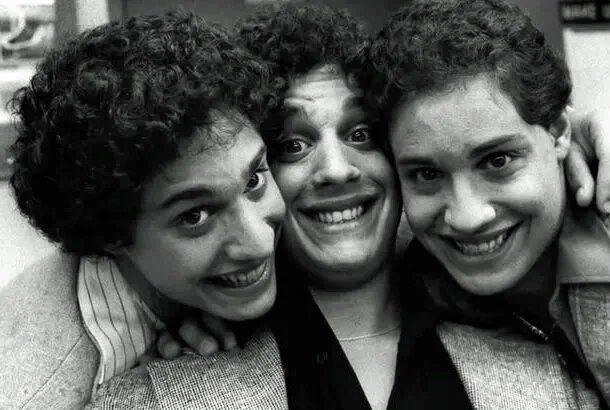

In an astounding story that seems straight out of a film, three brothers were unknowingly involved in a disturbing experiment orchestrated by a cold-hearted scientist. Though linked by blood, they were separated by circumstances, and their eventual reunion offered some solace, yet the shadows of their shared history loomed large.
The narrative begins in New York City on July 12, 1961, when an unwed mother gave birth to identical triplets. Despite their healthy start, the boys were soon handed over to different adoptive families, with their mother’s reasons for leaving them a mystery.

Years later, the realization of their shared existence upended the lives of Robert Shafran, Edward Galland, and David Kellman. Robert and Edward’s chance meeting on a college campus, followed by David’s discovery, ignited a media frenzy and worldwide intrigue about their unique story.
However, their newfound fame concealed a troubling reality about their childhoods.
Unbeknownst to them, they had been subjects in a scientific study conducted by psychologist Peter Neubauer. Placed in different socio-economic environments, the experiment aimed to explore the effects of nature versus nurture on human development.
Although the brothers displayed remarkably similar characteristics and preferences, the experiment left deep psychological scars. Edward’s tragic death and the strained relationships between Robert and David are stark reminders of the long-lasting impacts of the study.
Despite achieving brief success with a restaurant aptly named ‘Triplets,’ it eventually failed, mirroring the discord in their personal lives. Nonetheless, Robert and David continued on, each finding their own way in adulthood.

As their story is revisited through a television series, there is hope that time and shared experiences might bring reconciliation among the estranged siblings.
Time will reveal whether the bonds of brotherhood can endure the weight of their turbulent past.
Leave a Reply